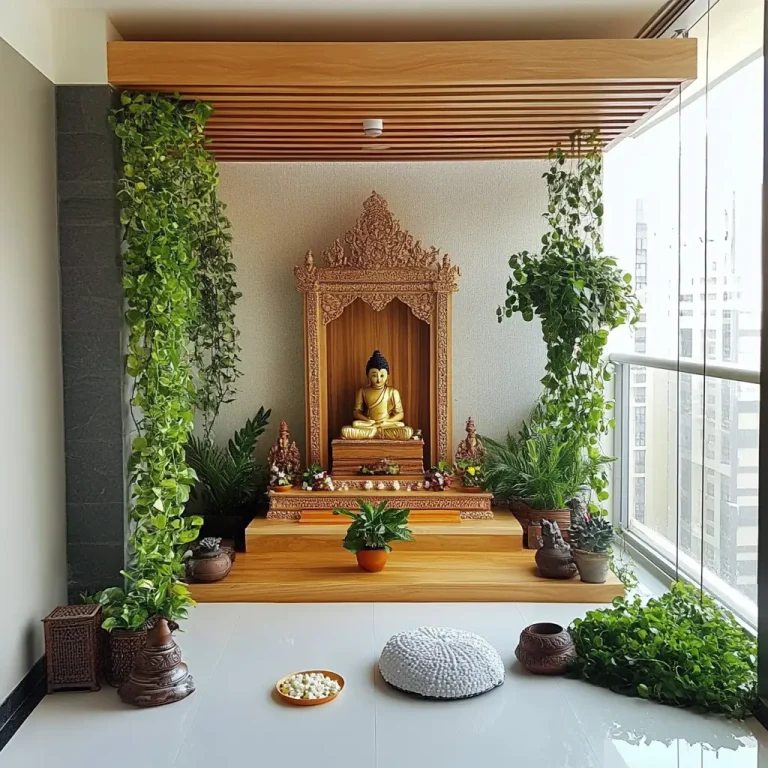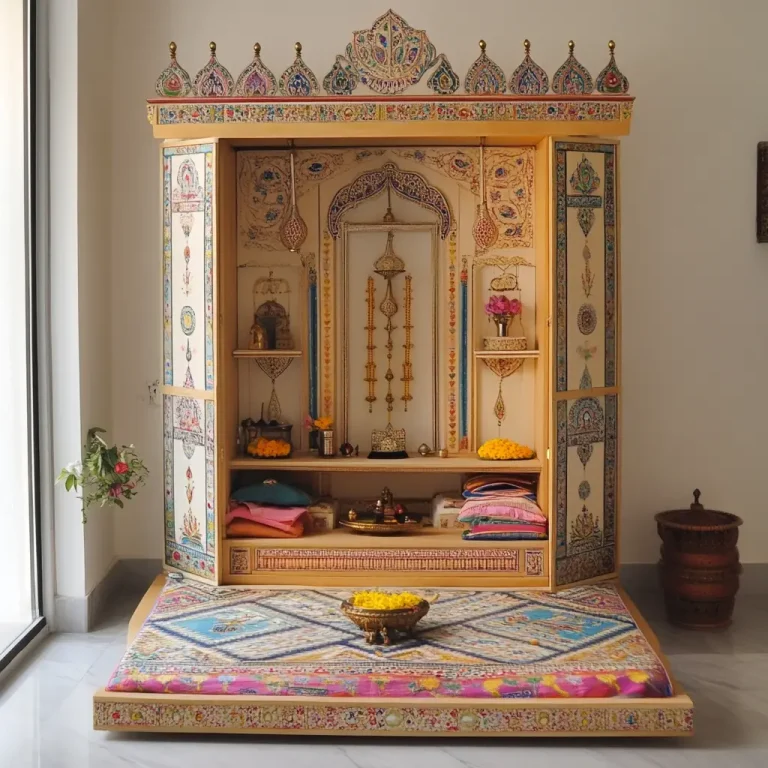20 Pooja Room Ideas Indian Traditional
Creating a pooja room that reflects Indian tradition is more than just decorating a corner—it’s about honoring spirituality and crafting a sacred space where daily rituals feel meaningful. Whether you have a dedicated room or a small niche, traditional Indian pooja room ideas blend culture, devotion, and aesthetics seamlessly. Here are 20 inspiring ideas to help you create a soulful sanctum at home.
1. Wooden Mandir with Intricate Carvings
A classic wooden mandir with hand-carved floral or temple motifs adds timeless grace to your pooja space. Choose warm-toned teak or sheesham wood for durability and that traditional temple look. Brass bells, carved pillars, and jaali doors elevate the aesthetic.
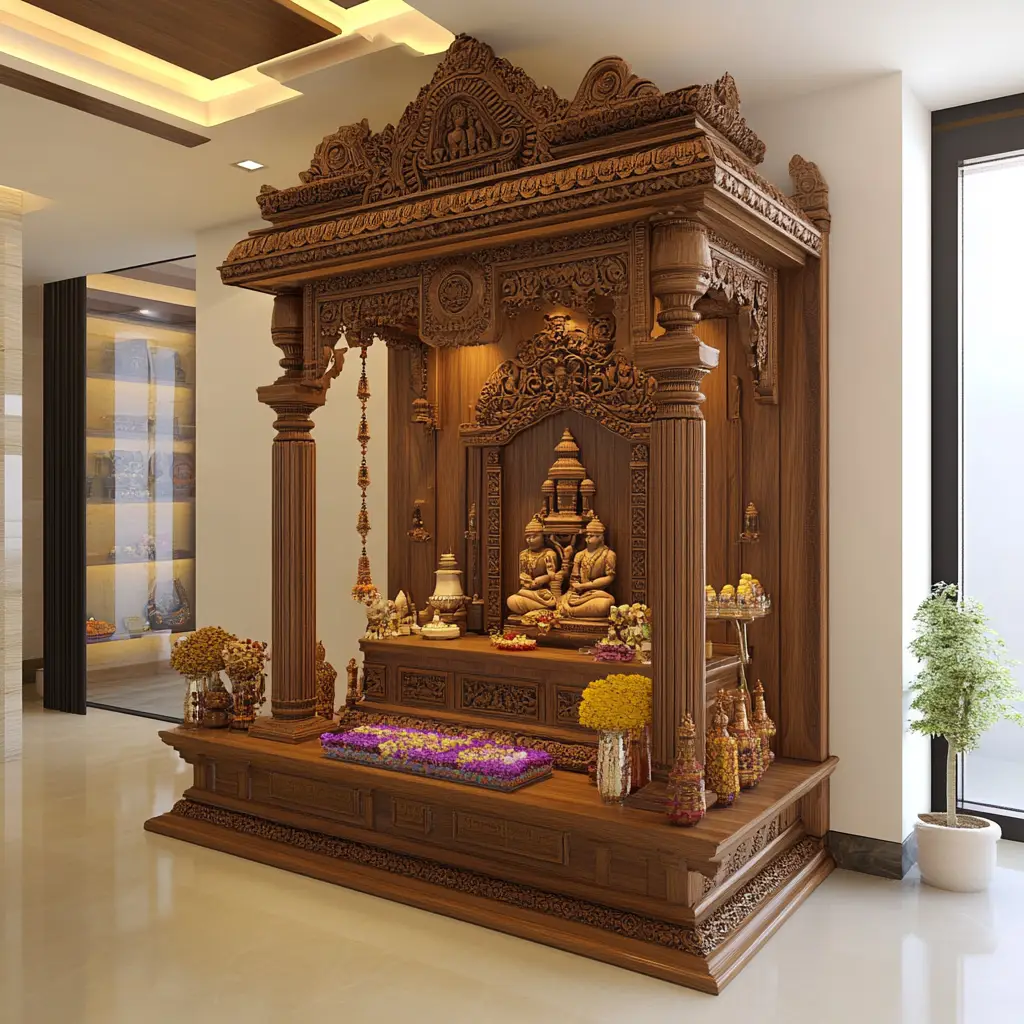
2. South Indian Temple-Style Setup
Inspired by temples in Tamil Nadu or Kerala, this style uses granite or stone bases, brass oil lamps, and idol placements with traditional symmetry. Add banana leaves and fresh flowers daily to keep the energy pure and auspicious.
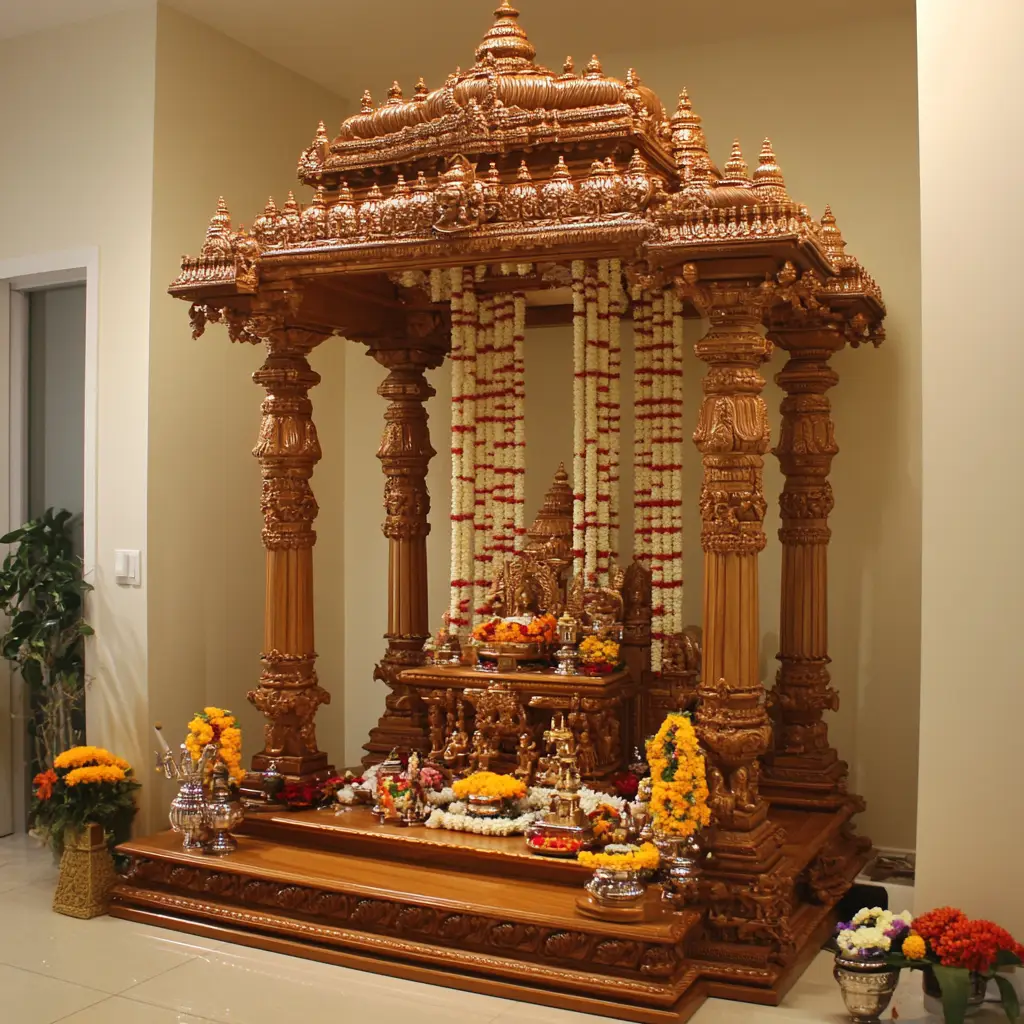
3. Marble Mandir with Inlay Work
White marble mandirs with intricate floral inlay work bring a serene and divine feel. Ideal for those who love opulence with a soft touch, these can be customized with arches, jaalis, and Om symbols.
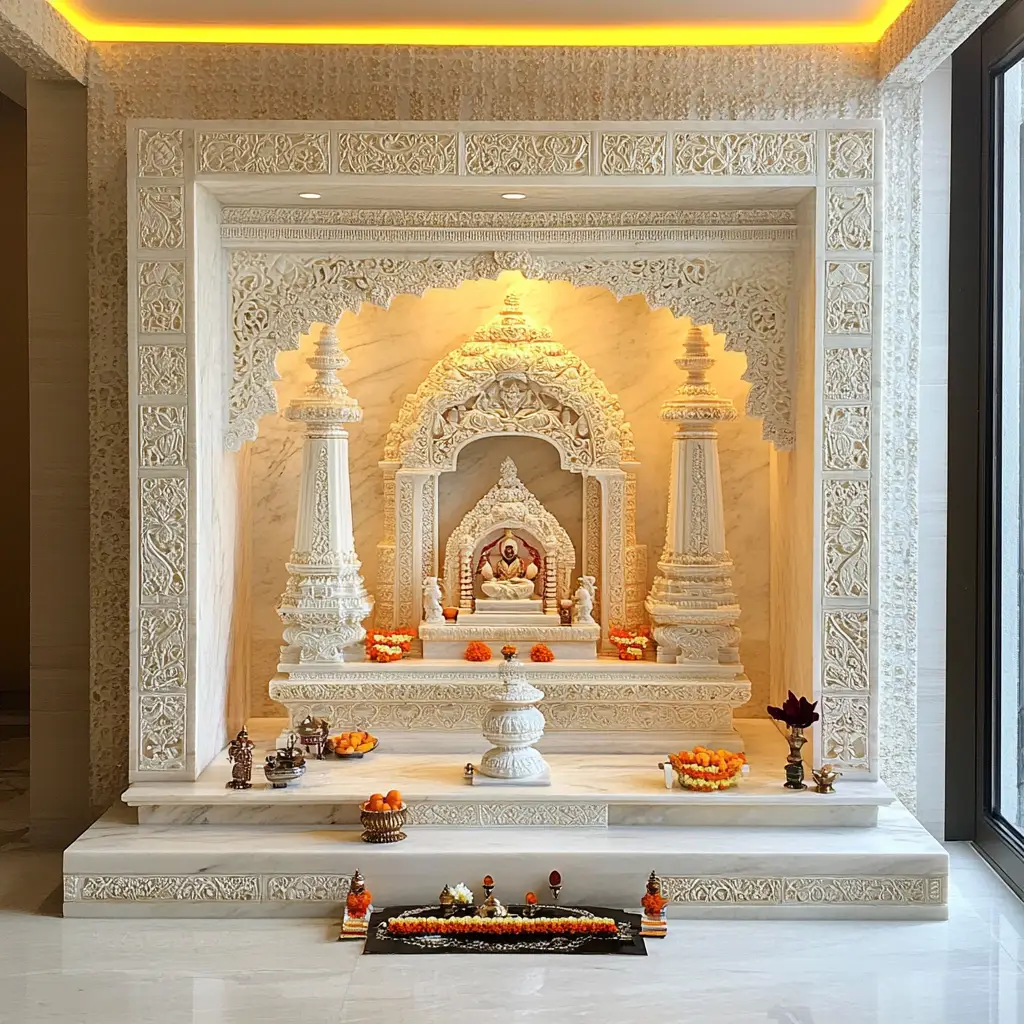
4. Wall-Mounted Wooden Units
Perfect for smaller homes or apartments, a wall-mounted pooja unit with built-in shelves offers functionality with reverence. Look for ones with drawers for storing essentials like incense, oil, and wicks.
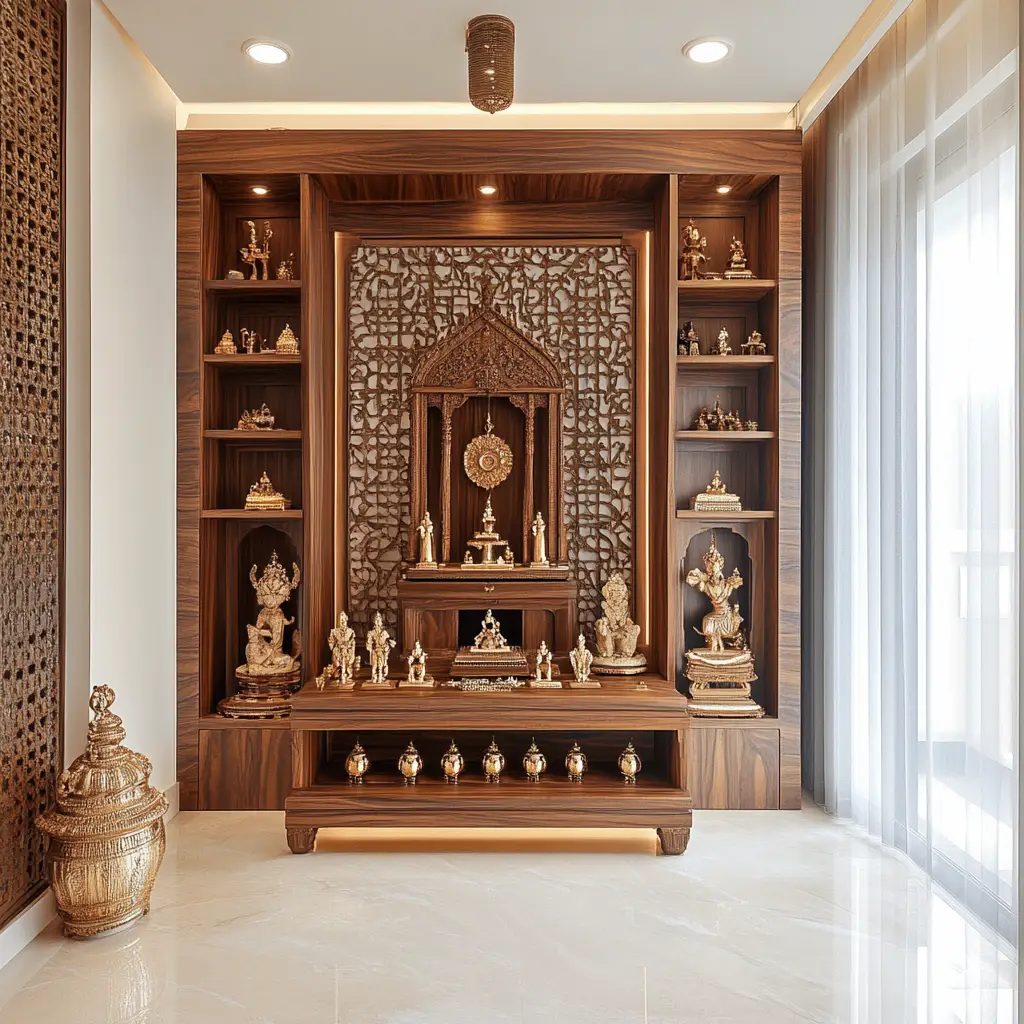
5. Brass and Bell Decor Accents
Traditional Indian pooja rooms often feature suspended brass bells. Hanging a few above or in front of the mandir adds a temple-like ambiance. You can also place small brass diyas and kalashas on the pooja table.

6. Jaali Partition for Privacy
Use carved wooden or MDF jaali screens to separate the pooja area from the rest of your home. This adds a sense of seclusion and reverence while also acting as a decorative element.
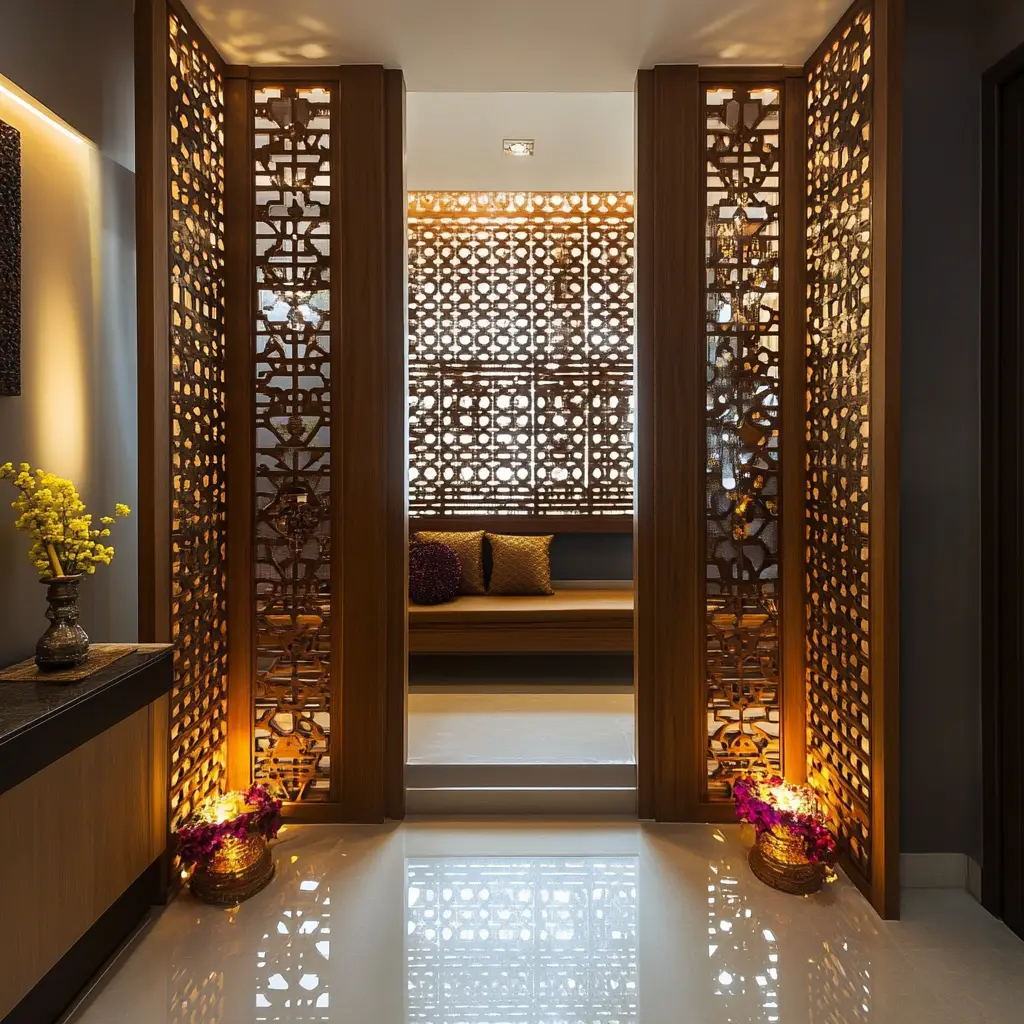
7. Niche in the Wall with Arch Design
Utilize an in-wall alcove to house your idols and photos. Adding a decorative arch with a Mughal or South Indian temple shape instantly gives it a traditional look.
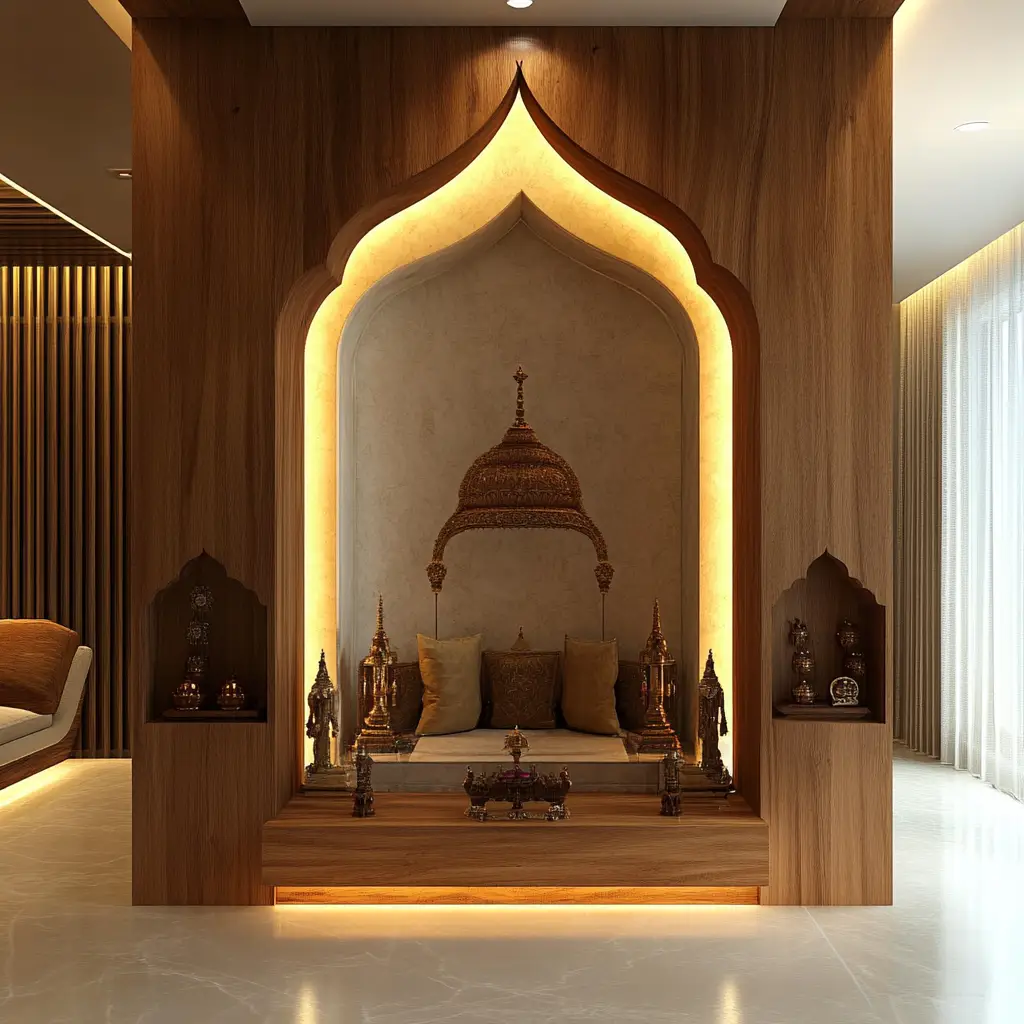
8. Use of Red and Yellow Tones
These sacred colors are often used in temples and rituals. Painting the background wall in deep red, saffron, or golden yellow sets a vibrant and divine mood.
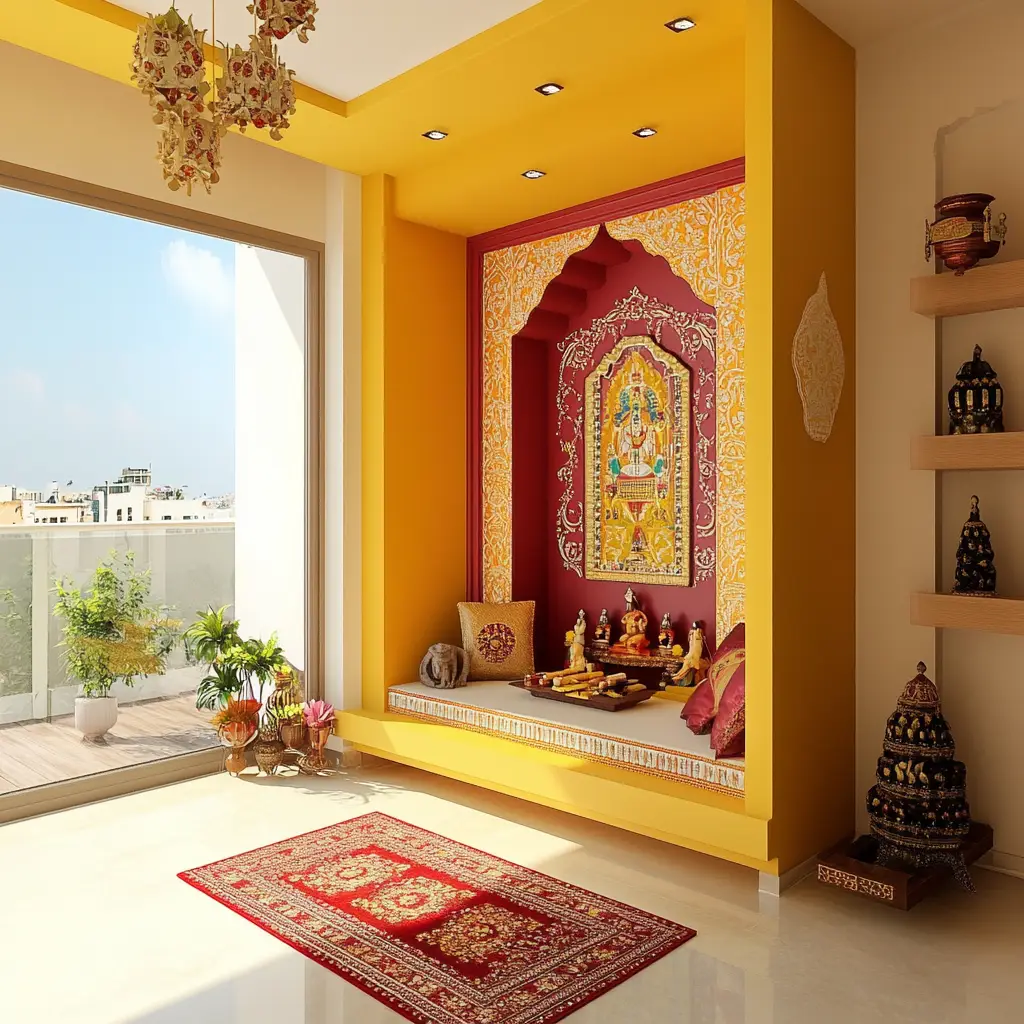
9. Gopuram-Style Backdrop
Incorporate miniature temple towers or gopuram-style wooden panels behind the idols. This idea replicates the grandeur of South Indian temple architecture.

10. Traditional Floor Seating
Add an embroidered floor mat, bolster pillows, and a low table to sit comfortably during rituals. Floor seating evokes humility and a spiritual connection during prayers.
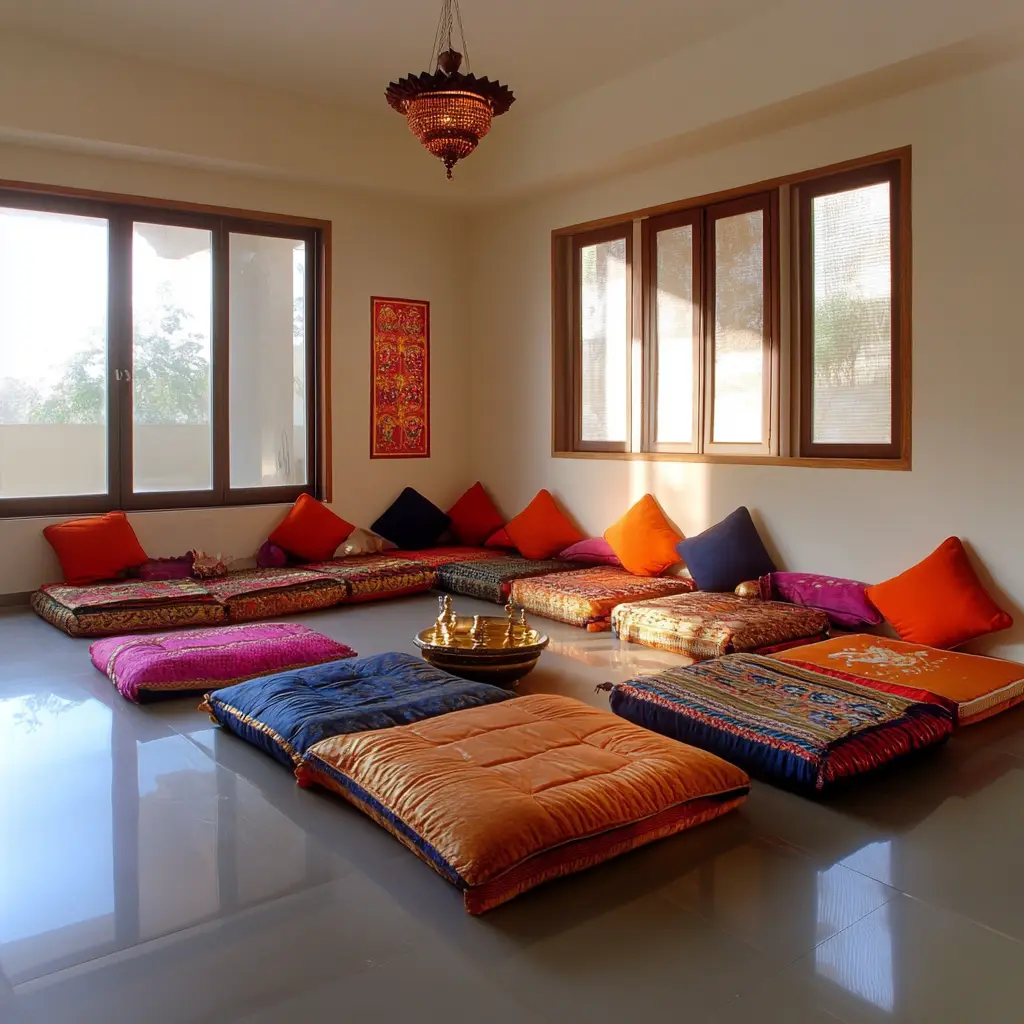
11. Idols in Brass or Panchaloha
Use traditional materials like brass or Panchaloha (five-metal alloy) for idols. These are believed to attract positive energy and maintain spiritual balance.

12. Sacred Symbol Artwork
Paintings or carvings of Om, Swastik, or Shree Yantra on the wall above the altar strengthen the spiritual aura. You can also use these motifs in tile or wall art.
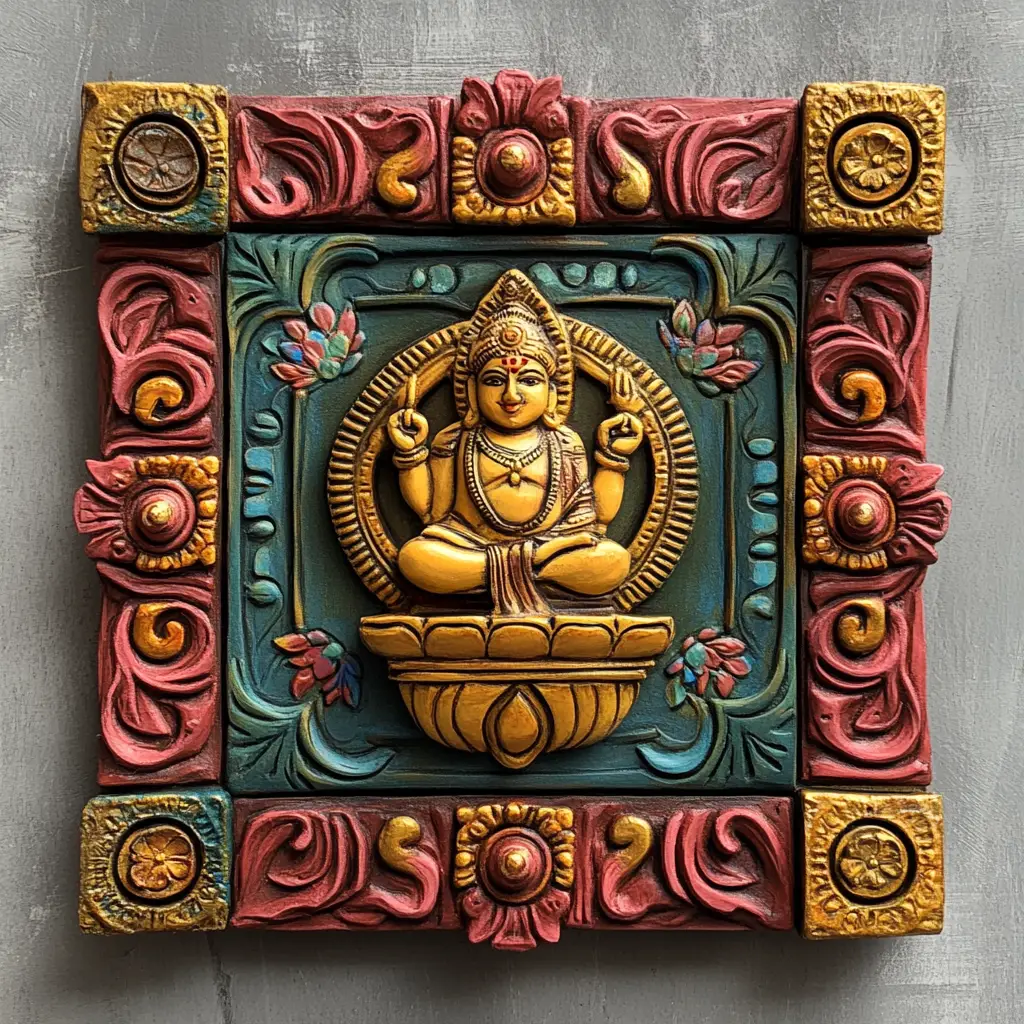
13. Backlit Panels for Glow
Install backlighting behind a translucent panel featuring a deity or mantra. It creates a warm glow that enhances the sanctity of the space.

14. Traditional Temple Curtains
Use brocade or silk curtains with temple borders to enclose the mandir during non-prayer hours. This maintains sacredness and adds a ritualistic feel.
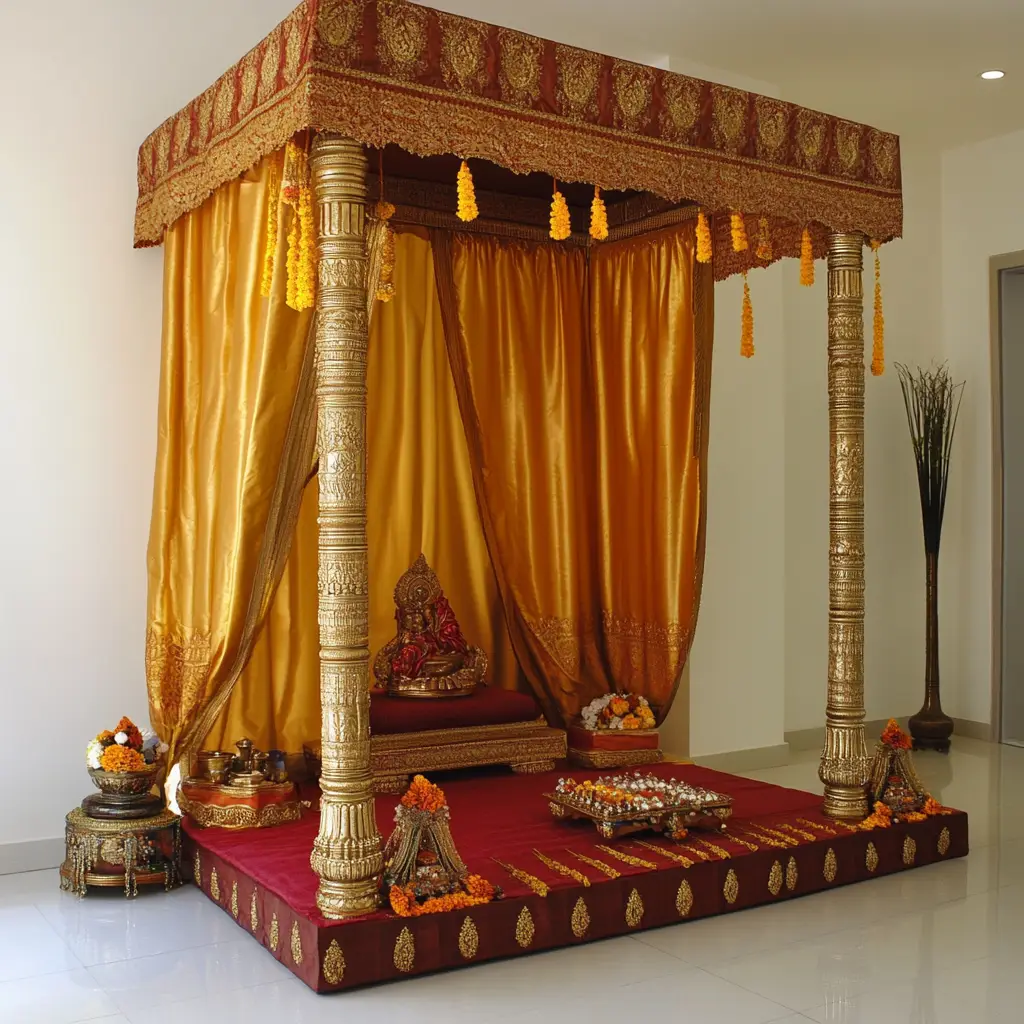
15. Floating Shelves for Deity Placement
Use tiered or floating shelves to neatly place idols, lamps, and framed pictures. It’s practical and can mimic the look of a traditional altar.
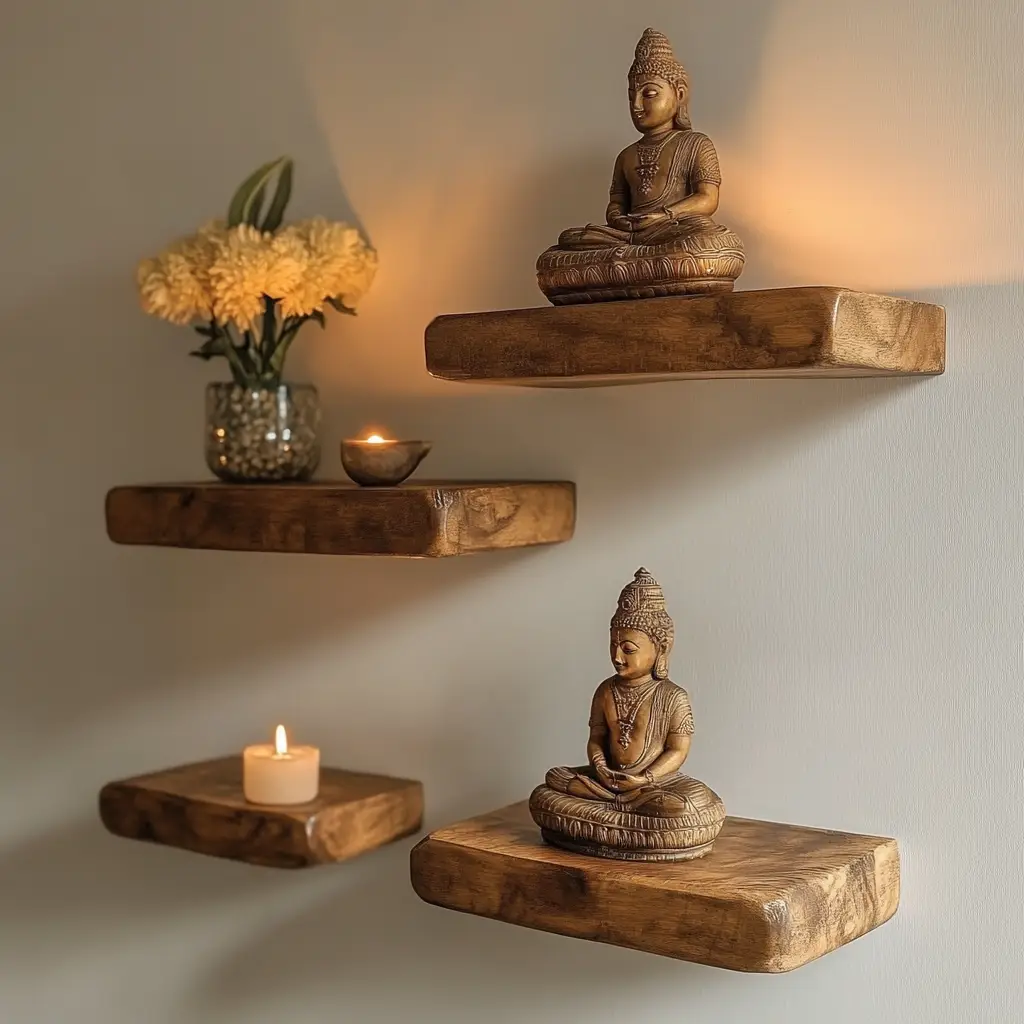
16. Diyas and Lamps Display
Create a dedicated corner or tiered shelf to display various sizes of diyas and brass lamps. Lighting them during festivals or daily prayers enhances devotion.

17. Copper and Brass Kalash Display
A cluster of kalash pots filled with mango leaves and coconut symbolizes abundance. Place them beside the mandir for a rich traditional vibe.
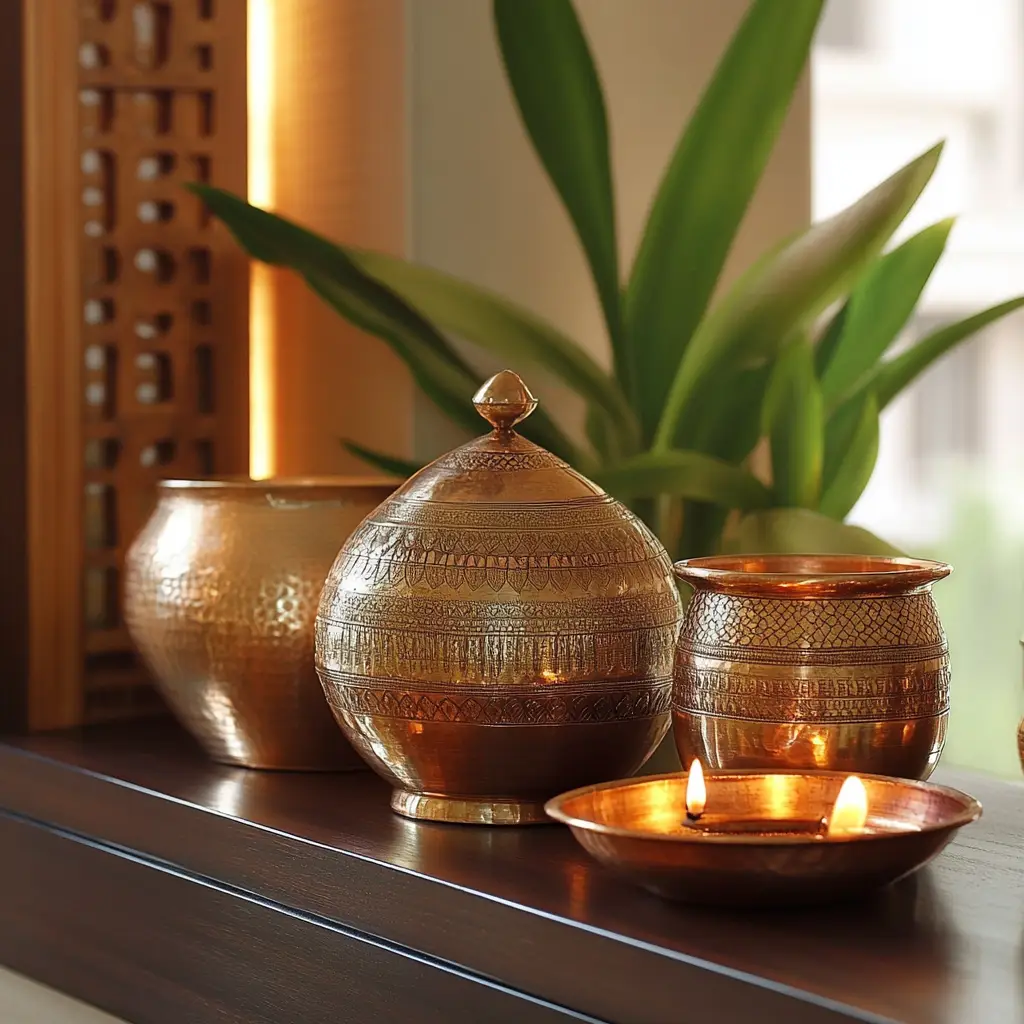
18. Temple-Inspired Dome Ceiling
If you’re building a new space, consider a dome or vault ceiling painted with sacred symbols. It adds to the feeling of walking into a real temple.
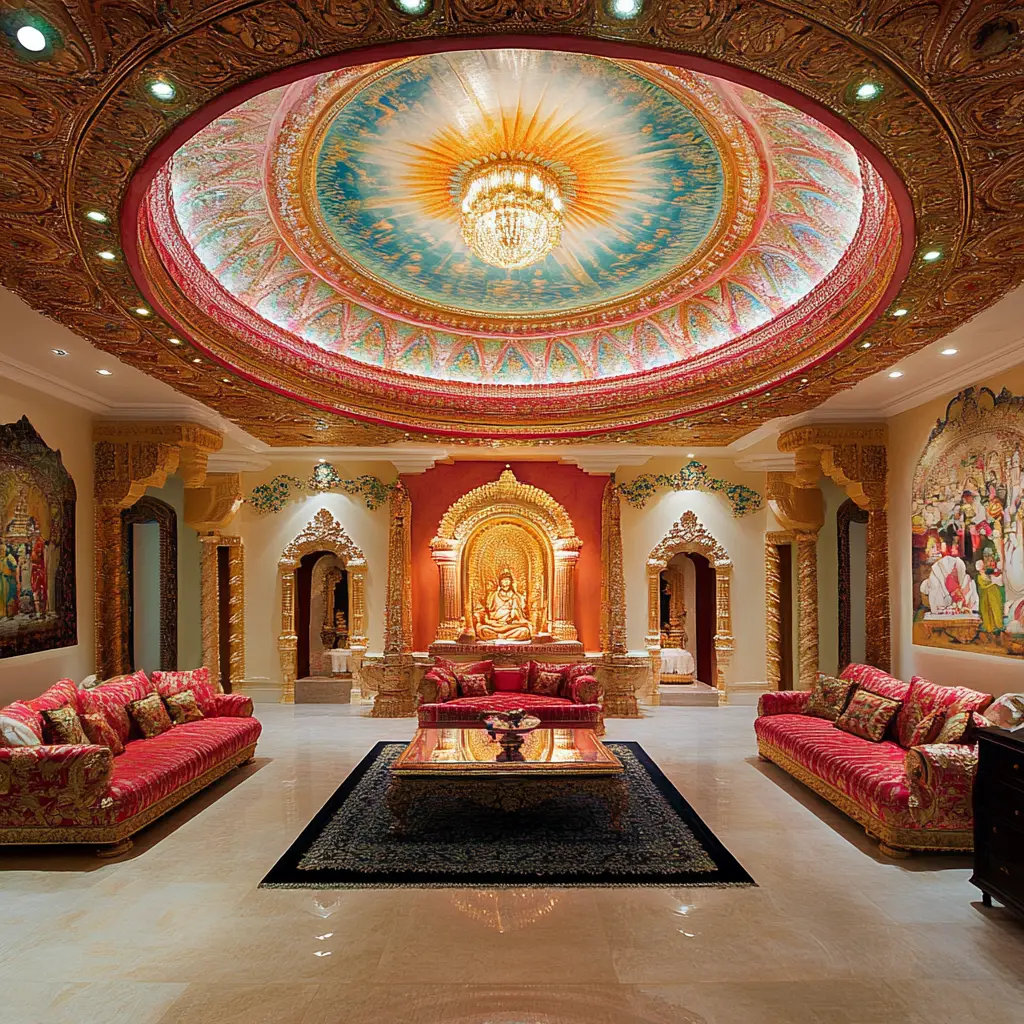
19. Rangoli or Kolam in Front
Draw a fresh rangoli or kolam with rice flour or colored powders daily. It’s an ancient ritual that invites divine blessings and purifies the surroundings.

20. Sacred Music Element
Keep a traditional tanpura, conch, or even a small bell handy. Playing or ringing them before or after prayers brings peace and vibrational energy to the room.
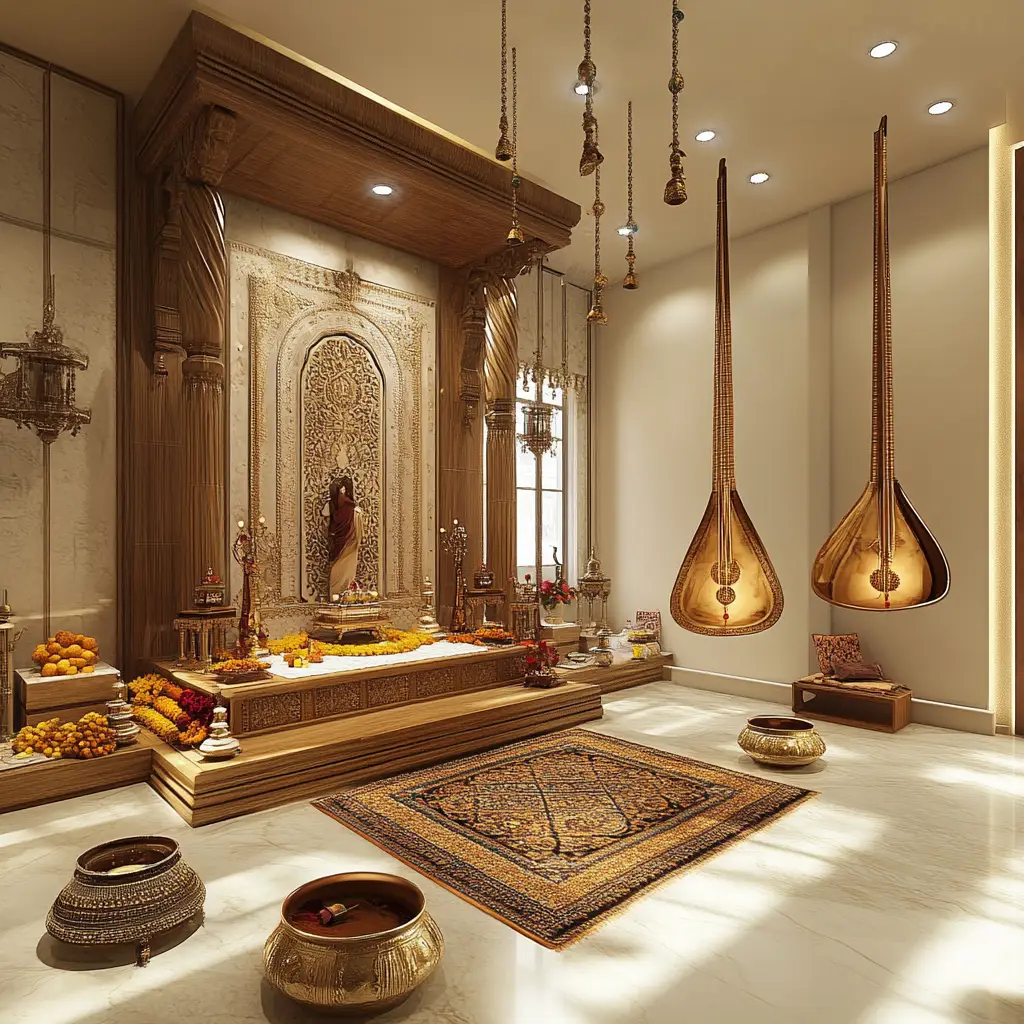
FAQs
Where should a pooja room be placed in the house according to Vastu?
The northeast corner is considered the most auspicious for a pooja room. If that’s not possible, north or east-facing spaces also work well.
Can I have a pooja space in my living room?
Yes, you can designate a calm, clutter-free corner with a divider or elevated platform. Use wall-mounted mandirs or compact units to maximize space.
What materials are ideal for traditional mandirs?
Wood, marble, and brass are commonly used materials in traditional Indian mandirs. They are not only durable but also carry sacred significance.
Is it necessary to close the mandir after pooja?
While not compulsory, many traditions prefer closing the pooja space with curtains or doors to maintain sanctity and avoid distractions.
How do I maintain the pooja room daily?
Keep the area clean, dust the idols and lamps regularly, offer fresh flowers, and avoid storing unnecessary items. A tidy pooja room attracts positive energy.
Conclusion
Traditional Indian pooja rooms are a heartfelt blend of culture, devotion, and aesthetics. Whether it’s the intricacy of hand-carved wood, the peacefulness of marble, or the energy of brass lamps, every detail in a pooja room adds spiritual depth. With these 20 ideas, you can create a space that feels sacred and grounded, reflecting your faith and personal style. Let your pooja room become the soul of your home.
